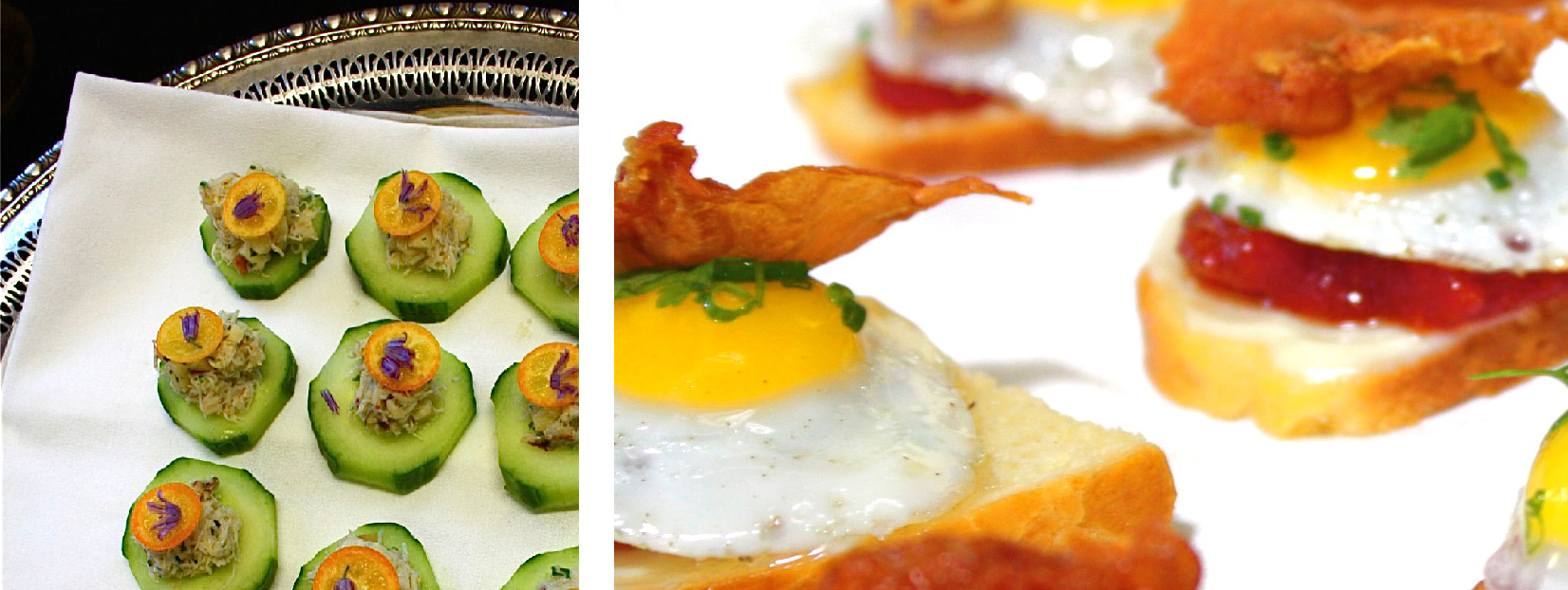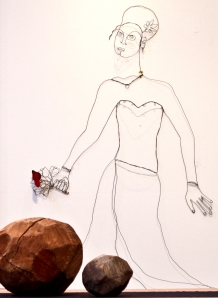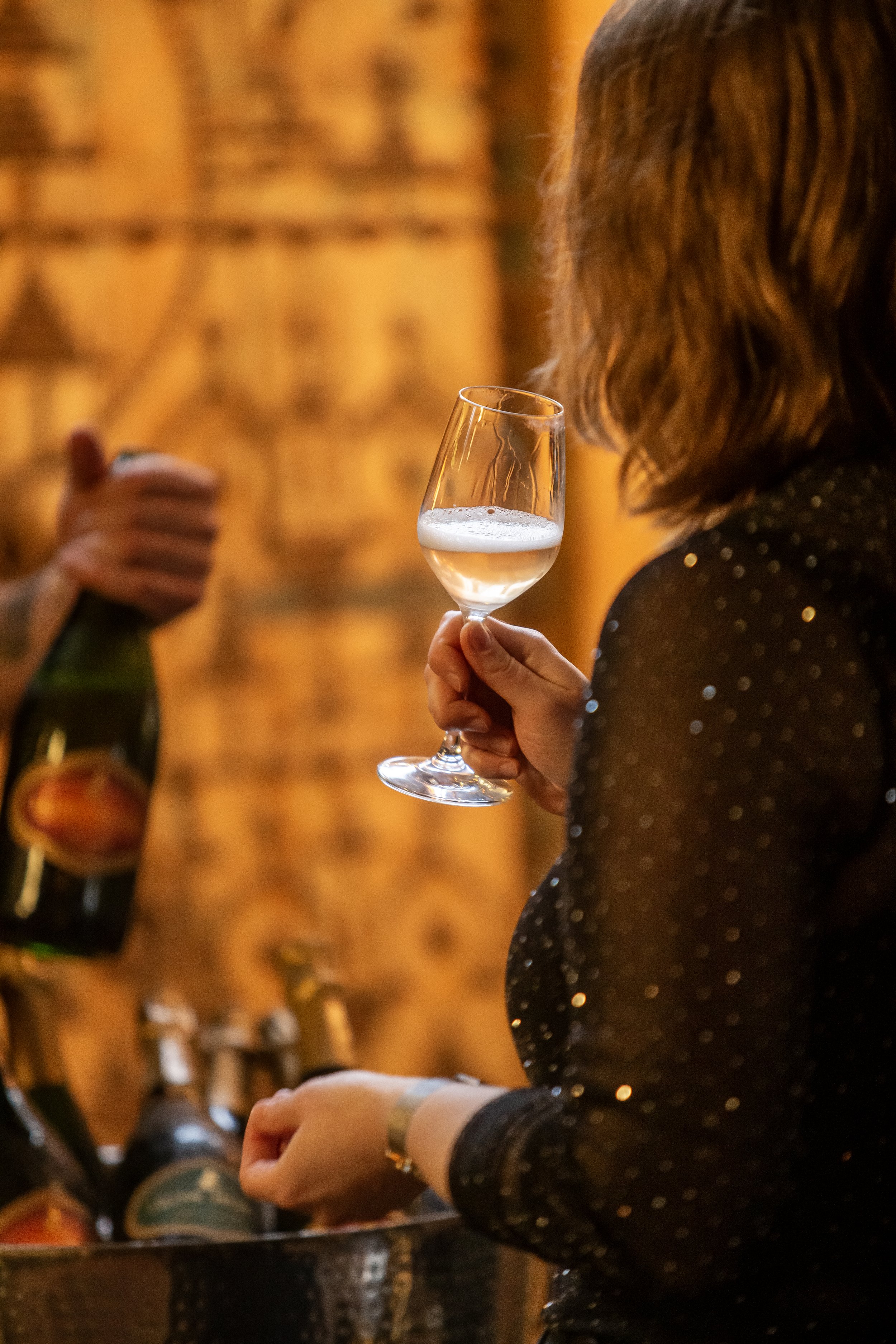Dish of the Week:
Lunch at Copain Winery
I hadn’t planned on attending the lunch party we were set to cater at Copain Winery last Monday, until I happened upon the list of ingredients Chef left in the kitchen for staff to start packing up early Monday morning. Charmed by the confluence of ingredients, it being a gorgeous day, and Copain being a beautiful winery, I decided to crash the party.
 We are partnering with Copain on a number of weddings this summer and I’ve heard nothing but wonderful things about it and about Wells Guthrie, the inordinately talented winemaker and driving force behind this state of the art facility ~ one of the most ergonomic around. Set on a hillside with a magnificent view running almost the length of the Russian River Valley, the facility is pleasing to the eye with a pared down, elegantly understated style. Farmhouse meets Koolhaas.
We are partnering with Copain on a number of weddings this summer and I’ve heard nothing but wonderful things about it and about Wells Guthrie, the inordinately talented winemaker and driving force behind this state of the art facility ~ one of the most ergonomic around. Set on a hillside with a magnificent view running almost the length of the Russian River Valley, the facility is pleasing to the eye with a pared down, elegantly understated style. Farmhouse meets Koolhaas.
Still, I was curious to take a closer look for myself. Crucial to us with any off-site venue is whether or not the right pieces are in place which will enable us to pull off an authentic Barndiva experience when we aren’t on home ground.
 According to Tommy, the critical trademark of the Copain wine list is lower alcohol wines that preserves the brightness and acidity of the fruit. It was to taste through this remarkable line up of vintages ~ which would precede Barndiva’s four course lunch ~ that key servers and chefs from The French Laundry were coming to Copain that day.
According to Tommy, the critical trademark of the Copain wine list is lower alcohol wines that preserves the brightness and acidity of the fruit. It was to taste through this remarkable line up of vintages ~ which would precede Barndiva’s four course lunch ~ that key servers and chefs from The French Laundry were coming to Copain that day.
Scheduling off-site events on our days off happens very rarely around here, but such is the affection Thomas Keller and TFL inspire in many of our staff that Ryan, Pancho, Katherine, Bennett and Tommy were more than happy to work on their day off to provide a meal that would honor the ingredient driven, classical technique focus TFL is know for. That they are standards we too aim for with every plate that leaves our kitchen didn't lessen the tension on our end: this would be a most discerning crowd to please. Restaurant folks ~ especially those who work at places like The French Laundry and Barndiva ~ eat out a lot. They are usually generous to a fault to your face (knowing how hard it is to pull off that level of excellence on a day to day, meal to meal basis) but intensely critical as a matter of course. While Ryan planned four courses that would elevate the wine experience ~ the entire menu was designed to highlight the wine friendly (especially for Pinot) flavor profiles of truffles, beets, salmon, bacon, mushrooms ~ he was also intent on balancing proteins to vegetables to fruits, so the meal as a whole would flow seamlessly from one paired course to another.
 The three passed appetizers, all served with sparkling wine, exemplified this approach. First up was fresh Dungeness crab on sliced cucumber topped with a thin disc of kumquat ~ tart orange fruit which opened the palate with a citrus slap, followed by the fresh smell and taste of the sea and a green crunch. Next came a smiling nod to TK with a quail egg BLT ~ a rich mound of yolk, bacon, tomato jam and brioche with a delicate trailing stem of chervil, an herbal grace note to civilize all that umami.
The three passed appetizers, all served with sparkling wine, exemplified this approach. First up was fresh Dungeness crab on sliced cucumber topped with a thin disc of kumquat ~ tart orange fruit which opened the palate with a citrus slap, followed by the fresh smell and taste of the sea and a green crunch. Next came a smiling nod to TK with a quail egg BLT ~ a rich mound of yolk, bacon, tomato jam and brioche with a delicate trailing stem of chervil, an herbal grace note to civilize all that umami.
 The last of the passed appetizers, a single ripe strawberry from Quivira, went out unadorned, but was no less complex for the role it played in the flow of the afternoon. A tart and fruity palate cleanser which also signaled the seated lunch was about to begin, for the wise (or the lucky) it provided an opportunity for one last look down into the vineyards below, where the valley spread out in all its summer glory, caught in the throes of the first real heat of the season. Cicadas buzzed the air, and the connection to lush vines and the wines that had come from them and just been drunk, was palpable. Whether Ryan intended it or not, the moment made sense in the way poetry makes sense when you stop worrying about what the words mean and just lean in and let yourself relax.
The last of the passed appetizers, a single ripe strawberry from Quivira, went out unadorned, but was no less complex for the role it played in the flow of the afternoon. A tart and fruity palate cleanser which also signaled the seated lunch was about to begin, for the wise (or the lucky) it provided an opportunity for one last look down into the vineyards below, where the valley spread out in all its summer glory, caught in the throes of the first real heat of the season. Cicadas buzzed the air, and the connection to lush vines and the wines that had come from them and just been drunk, was palpable. Whether Ryan intended it or not, the moment made sense in the way poetry makes sense when you stop worrying about what the words mean and just lean in and let yourself relax.
 The next two courses have both been featured as Dish of the Week before. Chef wanted a flawless summer salad, Healdsburg style, which meant every component at the peak of ripe perfection. Another single strawberry was joined by heirloom golden and red beets, two varieties of radish, whole peeled truffled almonds, chives, chervil and a perfectly ripe wedge of Cypress Grove Truffle Tremor. Beet vinaigrette (beet juice, Preston VOO, champagne vinegar) was drizzled alongside the salad. The summer salad was paired with a 2004 and 2006 Roussanne, both from Copain's James Berry Vineyard.
The next two courses have both been featured as Dish of the Week before. Chef wanted a flawless summer salad, Healdsburg style, which meant every component at the peak of ripe perfection. Another single strawberry was joined by heirloom golden and red beets, two varieties of radish, whole peeled truffled almonds, chives, chervil and a perfectly ripe wedge of Cypress Grove Truffle Tremor. Beet vinaigrette (beet juice, Preston VOO, champagne vinegar) was drizzled alongside the salad. The summer salad was paired with a 2004 and 2006 Roussanne, both from Copain's James Berry Vineyard.
 Using Wild King Salmon from Oregon on a Lucian Freud sized brush stroke of fresh pea purée with a generous trail of caviar crème fraîche, the main course was finished with fresh porcini from Mt Shasta, tiny house made chips, and chive flowers. The salmon was paired with two Pinots: a 2006 Hacienda from the Sequoia Vineyard, and a 2006 from Cerise.
Using Wild King Salmon from Oregon on a Lucian Freud sized brush stroke of fresh pea purée with a generous trail of caviar crème fraîche, the main course was finished with fresh porcini from Mt Shasta, tiny house made chips, and chive flowers. The salmon was paired with two Pinots: a 2006 Hacienda from the Sequoia Vineyard, and a 2006 from Cerise.
 Dessert had been made that morning in the Barndiva kitchen by yet another French Laundry and Bouchon alum, Octavio, our wonderful new pastry chef who has been wowing diners and wedding guests all summer. Big O’s Blueberry Clafoutis was presented with vanilla bean crème fraîche and a not overly sweet but wonderfully indulgent crème fraîche ice cream.
Dessert had been made that morning in the Barndiva kitchen by yet another French Laundry and Bouchon alum, Octavio, our wonderful new pastry chef who has been wowing diners and wedding guests all summer. Big O’s Blueberry Clafoutis was presented with vanilla bean crème fraîche and a not overly sweet but wonderfully indulgent crème fraîche ice cream.
I left Copain just as the desserts were being plated, luckily not before I heard a short but pithy exchange that summed up the meal for me precisely. Shale, a young garde manger whom Chef has taken under his wing this summer quietly reminded Ryan that he hadn’t plated the Clafoutis with the raspberries he'd been told to bring expressly for this dish. Ryan looked at him, deadpan, “Knowing what not to put on a plate is as important as knowing what is, ” he said, waiting a beat for it to sink in before he broke into his first real smile of the day. Standing in Copain’s beautiful space, after the meal he’d pulled off, it was an almost perfect moment. The only thing that could have made it better was if TK had been there to enjoy it.
In the Gallery
 Seth Minor, our favorite single-wire artist and all around guy (Camp Meeker politician, MFA student, killer accordion player, seminal member of Barndiva's Tractor Bar Trio) has just brought in six wonderful new pieces to bolster up his coveted collection in the Gallery.
Seth Minor, our favorite single-wire artist and all around guy (Camp Meeker politician, MFA student, killer accordion player, seminal member of Barndiva's Tractor Bar Trio) has just brought in six wonderful new pieces to bolster up his coveted collection in the Gallery.
To my mind Seth is the closest thing this medium has to John Updike, managing to capture in a few spare but elegant lines universal character traits that ~ like it or not ~ make us vulnerable, if not lovable, humans. Mordant in tone, yet oddly hopeful in a insouciant way that can't help but make you smile (a lot like the artist) believe us when we say this shadow driven rogues gallery needs to be viewed in person. Photographs ~ even ones as good as these by Studio Barndiva's Dawid Jaworski~ don't do them justice.
Until he lets us increase them, prices for Seth Minor's work will start at $110 this summer, for any in the ‘Faces Collection,’ with larger pieces from $800 - $3,400. Mr. Minor will work on commission, from photographs, as his schedule allows.
 To meet Seth in person, come for dinner any Wednesday night through August when his Tractor Bar Trio will hold court in the Barndiva gardens where, weather permitting, they will serenade diners with two full sets of beer fueled excellent gypsy jazz.
To meet Seth in person, come for dinner any Wednesday night through August when his Tractor Bar Trio will hold court in the Barndiva gardens where, weather permitting, they will serenade diners with two full sets of beer fueled excellent gypsy jazz.
.
In the Press:
If you've missed the incredible edible issue on soil, it's not to late to check it out online:
Edible Marin - All Hail Soil (fyi, we're on page 15).
All text Jil Hales. All photos, Jil Hales and Dawid Jaworski (unless otherwise noted)

















